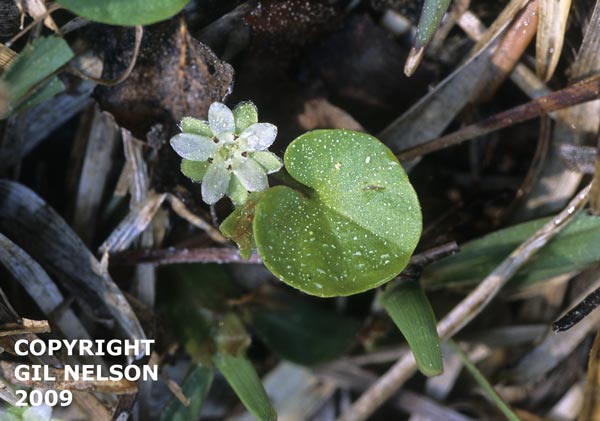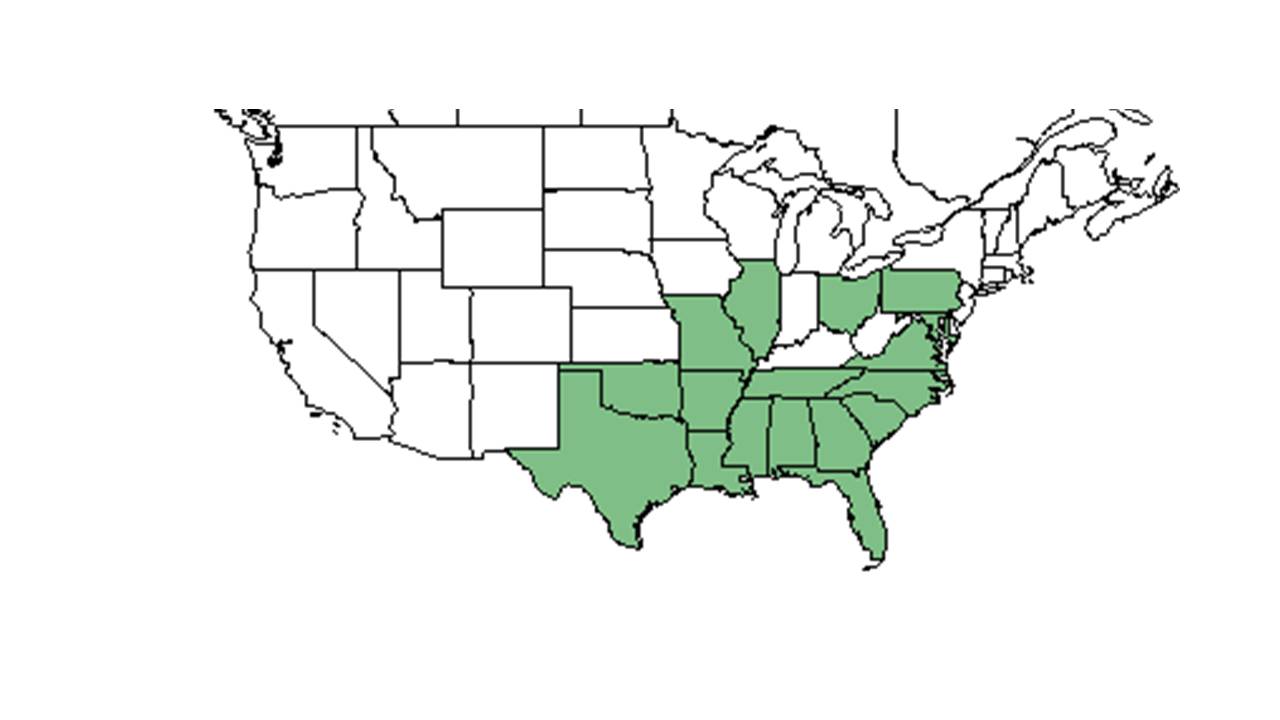Difference between revisions of "Dichondra carolinensis"
Krobertson (talk | contribs) (→Description) |
Krobertson (talk | contribs) |
||
| Line 30: | Line 30: | ||
==Ecology== | ==Ecology== | ||
===Habitat=== <!--Natural communities, human disturbed habitats, topography, hydrology, soils, light, fire regime requirements for removal of competition, etc.--> | ===Habitat=== <!--Natural communities, human disturbed habitats, topography, hydrology, soils, light, fire regime requirements for removal of competition, etc.--> | ||
| − | This species prefers dry loamy sand and high light levels. It occurs in several natural communities, including pine-oak woods and savanna. However, it also tends to be a ruderal species, appearing in disturbed habitat like mowed lawns and roadsides<ref name=fsu/>. | + | This species prefers dry loamy sand and high light levels. It occurs in several natural communities, including pine-oak woods and savanna. However, it also tends to be a ruderal species, appearing in disturbed habitat like mowed lawns and roadsides.<ref name=fsu/> |
| + | |||
| + | Associated species include ''Viola primulifolia, Cerastium Linaria, Oxalis.''<ref name=fsu/> | ||
| − | |||
===Phenology=== <!--Timing off flowering, fruiting, seed dispersal, and environmental triggers. Cite PanFlora website if appropriate: http://www.gilnelson.com/PanFlora/ --> | ===Phenology=== <!--Timing off flowering, fruiting, seed dispersal, and environmental triggers. Cite PanFlora website if appropriate: http://www.gilnelson.com/PanFlora/ --> | ||
This species has been observed flowering and fruiting in March<ref name=fsu/>. | This species has been observed flowering and fruiting in March<ref name=fsu/>. | ||
Revision as of 17:58, 15 August 2016
| Dichondra carolinensis | |
|---|---|

| |
| Photo taken by Gil Nelson | |
| Scientific classification | |
| Kingdom: | Plantae |
| Division: | Magnoliophyta - Flowering plants |
| Class: | Magnoliopsida – Dicotyledons |
| Order: | Solanales |
| Family: | Convolvulaceae |
| Genus: | Dichondra |
| Species: | D. carolinensis |
| Binomial name | |
| Dichondra carolinensis Michx. | |

| |
| Natural range of Dichondra carolinensis from USDA NRCS Plants Database. | |
Common name: Carolina ponysfoot
Contents
Taxonomic notes
Synonym: Dichondra repens J.R. Forster var. carolinensis (Michaux) Choisy;
Description
Dichondra carolinensis is a perennial herbaceous species with a ruderal growing habit.[1]
For D. carolinensis, they are a "prostrate, spreading or matted, pubescent perennial, rooting at the nodes. Leaves suborbicular to reniform, mostly 1-3 cm wide, sparsely pubescent beneath; petioles 1-4 cm long. Flowers small, axillary, solitary; sepals 2-3 mm long at anthesis, the outer surface pilose; corolla white, rotate-campanulate exceeded by the calyx; pistil of 2 nearly separate carpels, stigmas capitate, styles separate. Capsule 2-lobed, each lobe usually 1-seeded." [2]
Distribution
Ecology
Habitat
This species prefers dry loamy sand and high light levels. It occurs in several natural communities, including pine-oak woods and savanna. However, it also tends to be a ruderal species, appearing in disturbed habitat like mowed lawns and roadsides.[1]
Associated species include Viola primulifolia, Cerastium Linaria, Oxalis.[1]
Phenology
This species has been observed flowering and fruiting in March[1].
Fire ecology
D. carolinensis has been found in annually burned savanna, so it has some fire tolerance[1].
Conservation and management
Cultivation and restoration
Photo Gallery
References and notes
- ↑ 1.0 1.1 1.2 1.3 1.4 Florida State University Robert K. Godfrey Herbarium database. URL: http://herbarium.bio.fsu.edu. Last accessed: June 2014. Collectors: Loran C. Anderson, R. K. Godfrey, Lisa Keppner, Walter Kittredge, and R. Komarek. States and Counties: Florida: Gadsden, Leon, Liberty, Taylor, and Washington. Georgia: Grady.
- ↑ Radford, Albert E., Harry E. Ahles, and C. Ritchie Bell. Manual of the Vascular Flora of the Carolinas. 1964, 1968. The University of North Carolina Press. 861. Print.